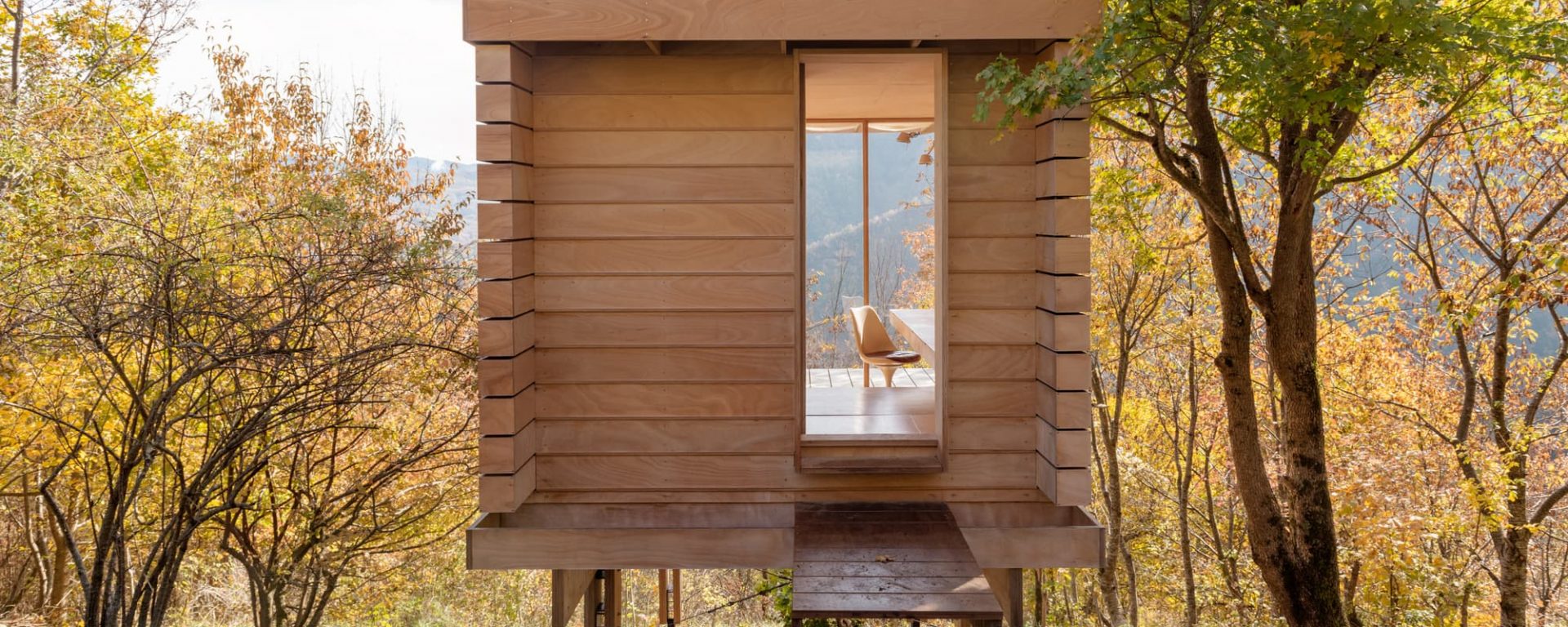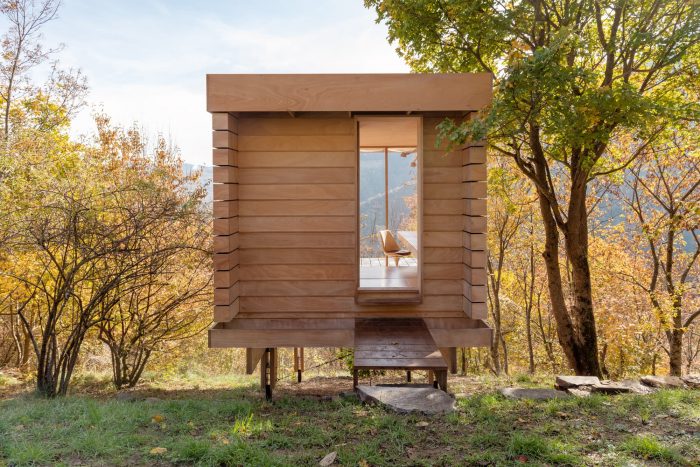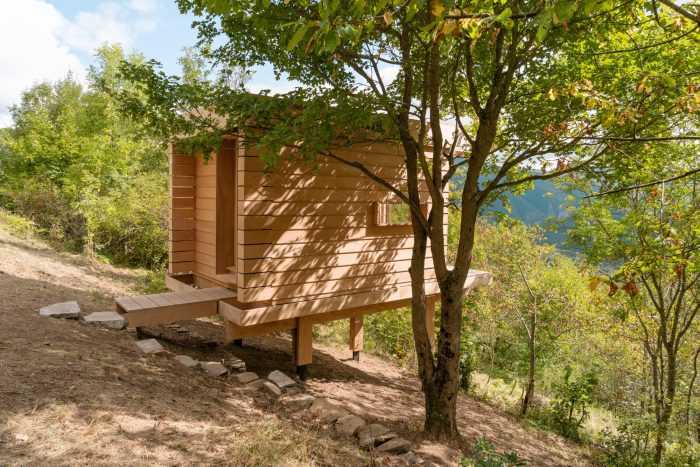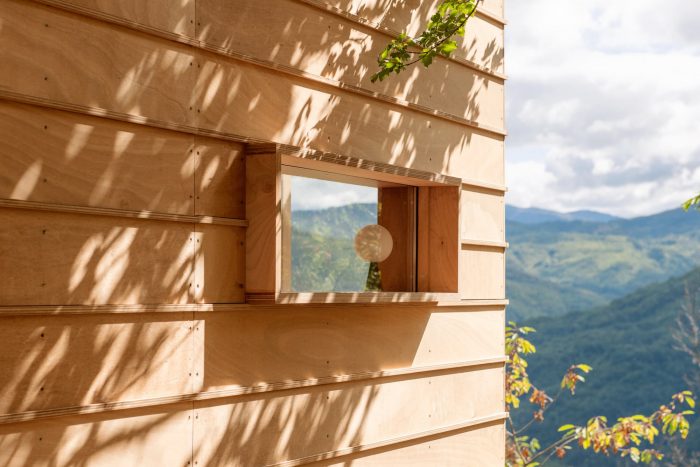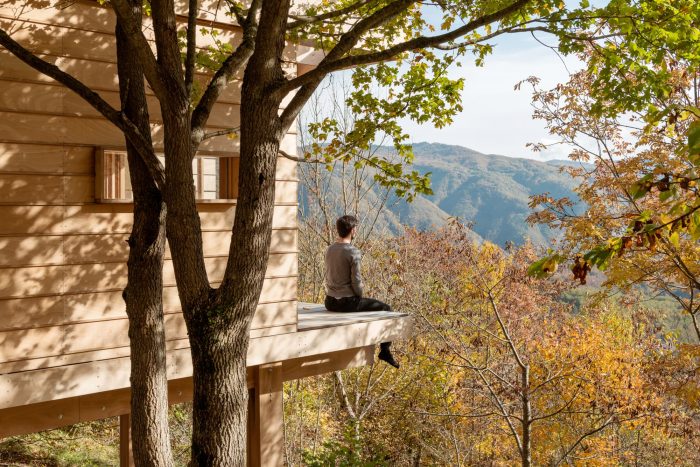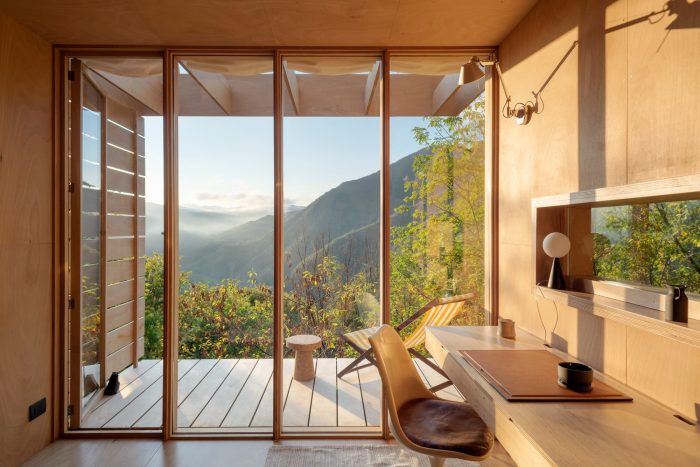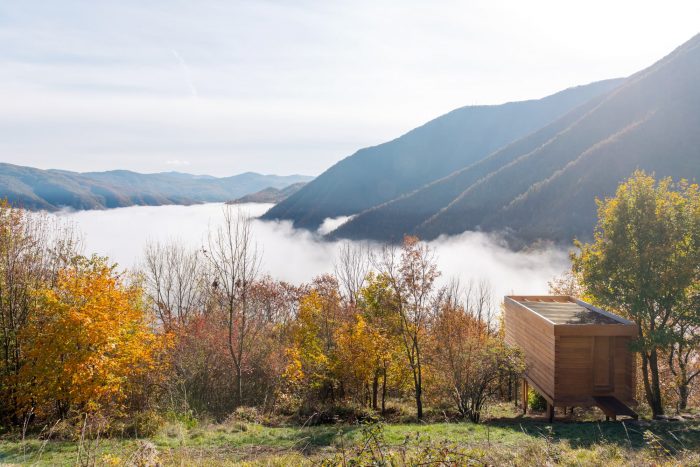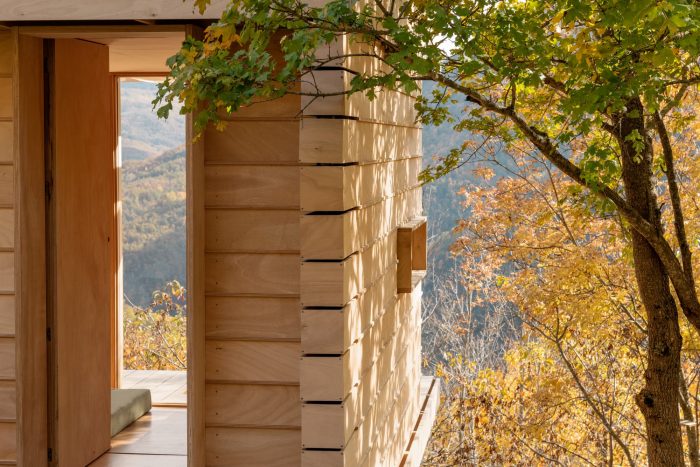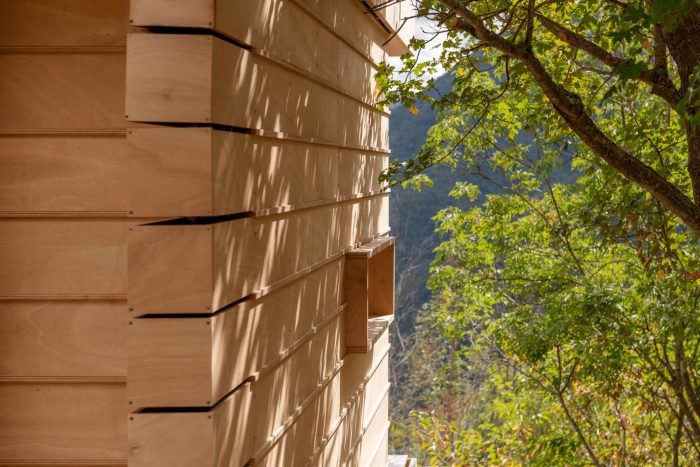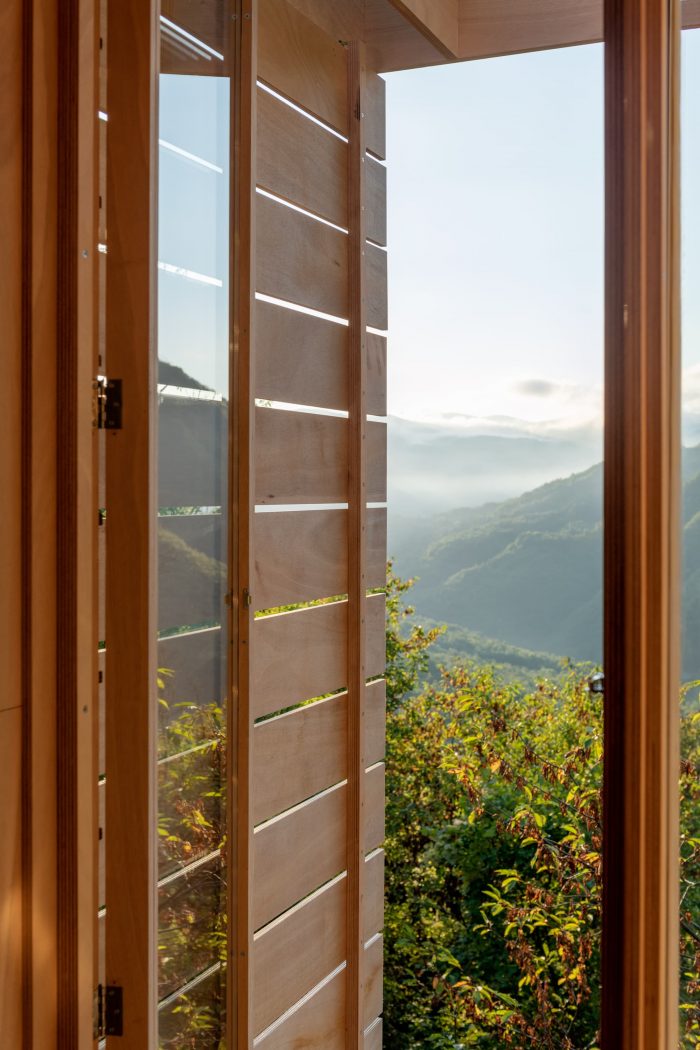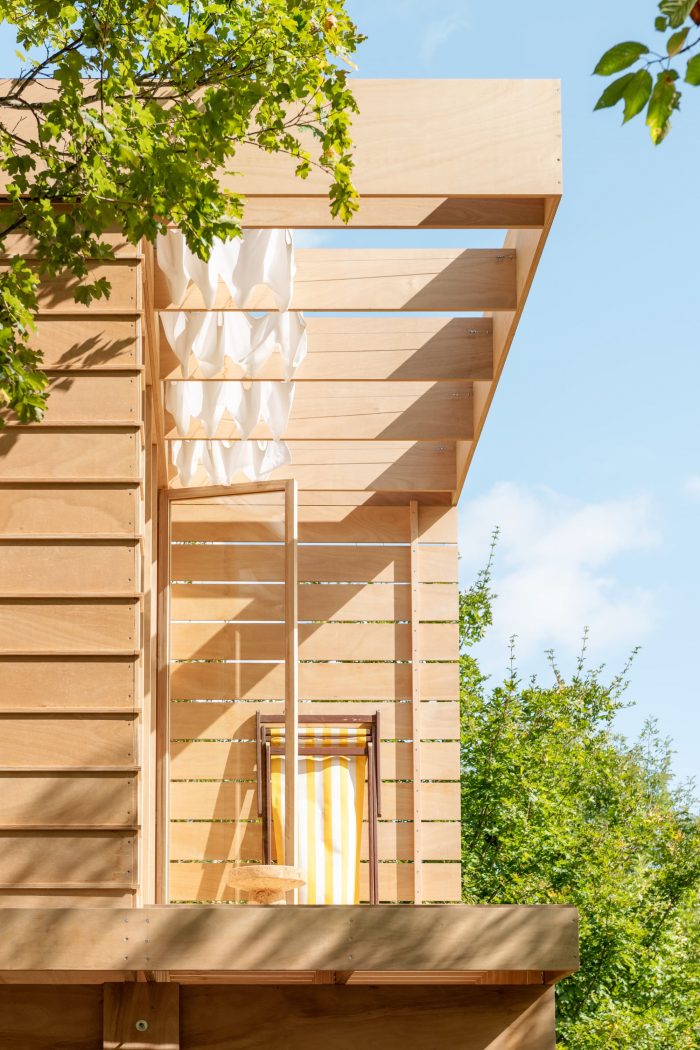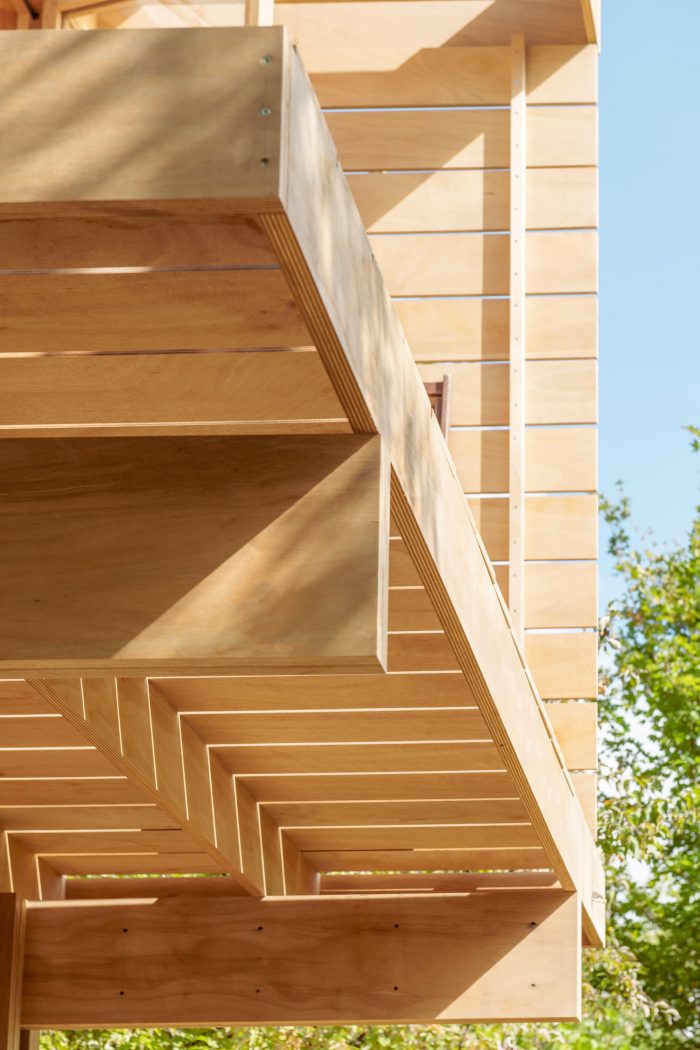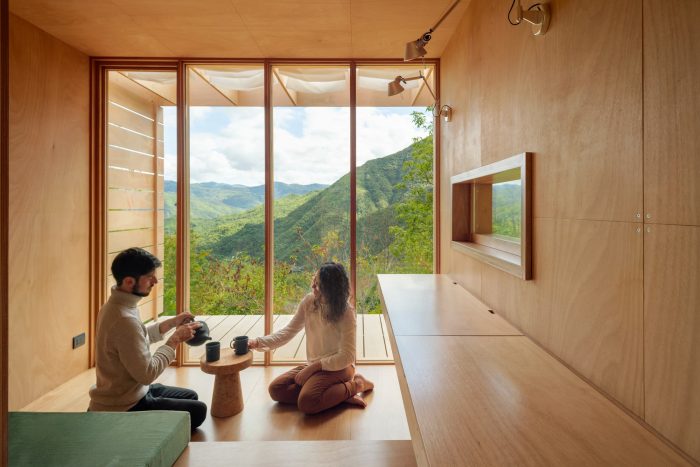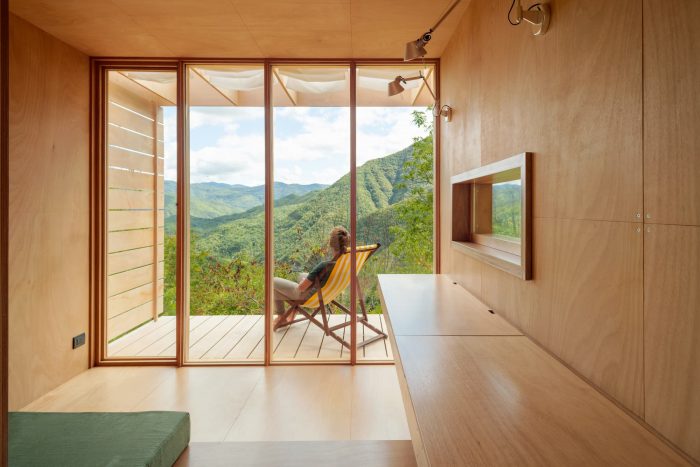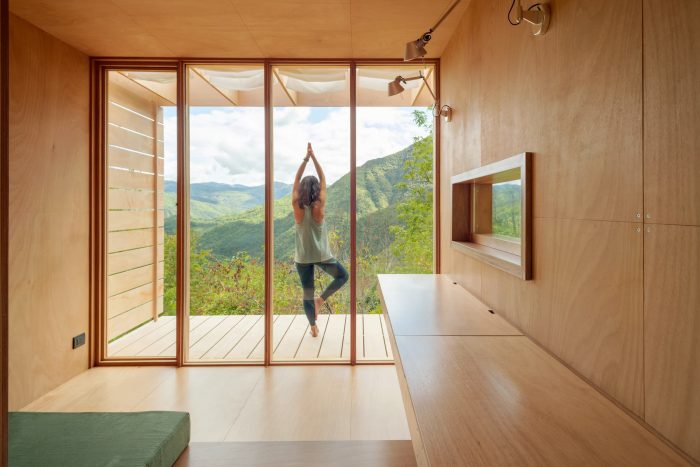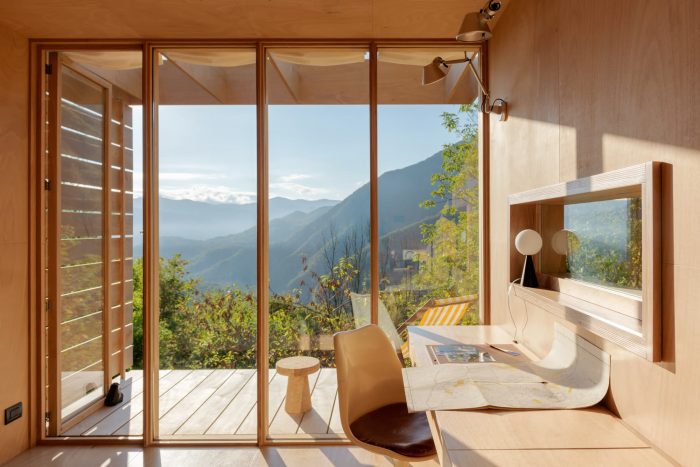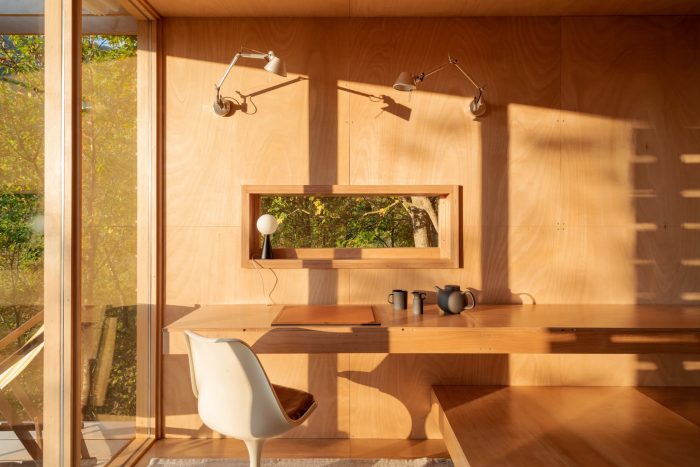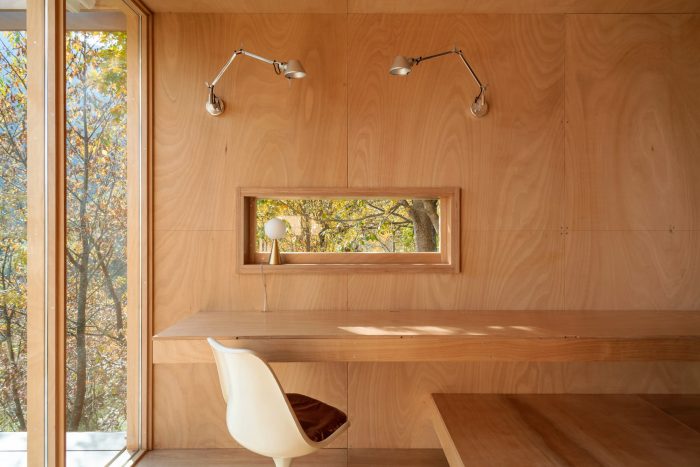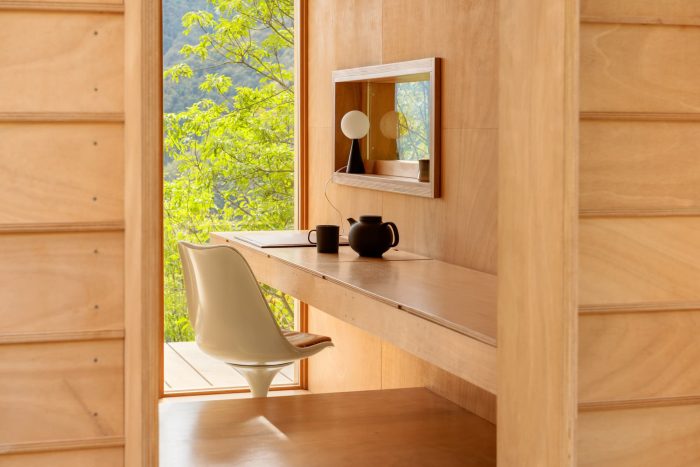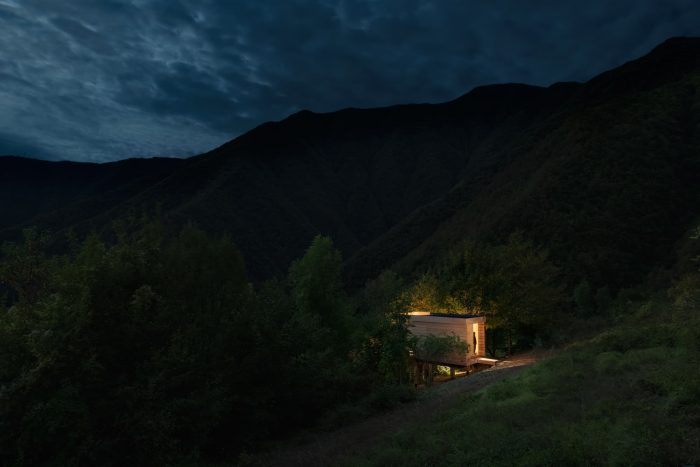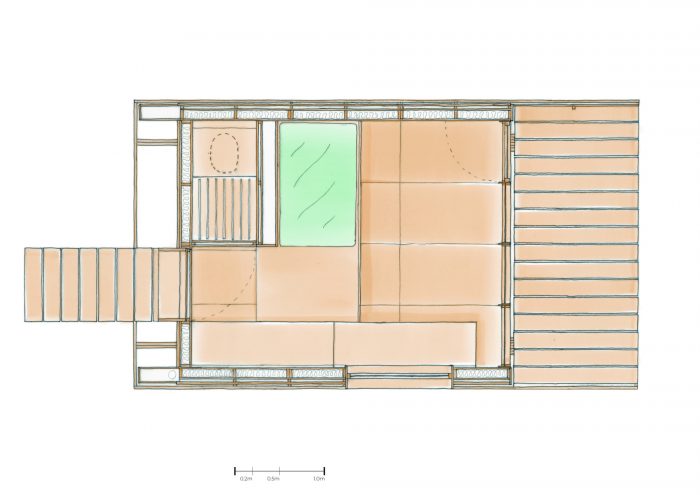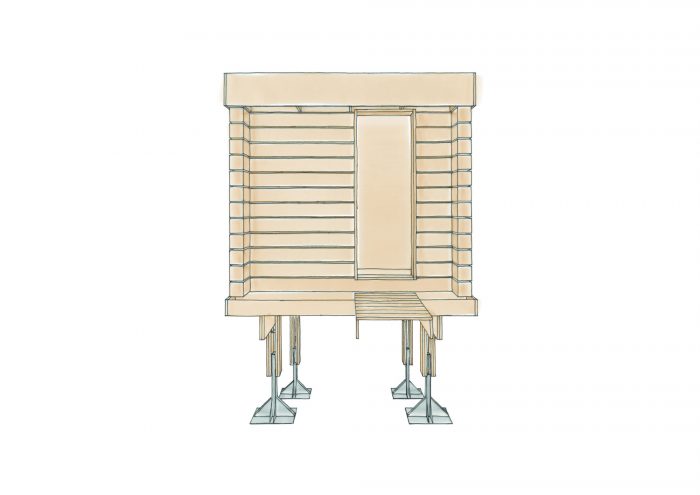我们在意大利的特雷比亚山谷,在利古里亚和艾米利亚之间的亚平宁山脉的中心,在一个远离一切、不为人知和荒芜的土地上。在这里,在陡峭的古代梯田的痕迹上,整个工作室在一个不寻常的车间里建造了一个木制结构。完全干式安装,与任何公共设施网络分离。从日本茶馆和斯堪的纳维亚森林中遇到的小木屋中汲取灵感,该项目探索了一种原始的空间和环境理念。
We are in the Trebbia Valley in Italy, in the heart of the Apennines between Liguria and Emilia, in a land far from everything, not well-known and wild. Here, on the traces of steep ancient terraces, the whole studio has built, in an unusual workshop, a wooden structure. Completely dry-mounted and detached from any utility network. Drawing inspiration from Japanese teahouses and cabins encountered in Scandinavian forests, the project explores an original idea of space and environment.
冬宫是从上面接近的。这个长方形的体量脱离了地面,并垂直于地面。
它垂直于陡峭的山坡,首先被捕捉到的是面向西北的后部。这里只有入口的门是可见的,有明显的木板标志,可以通过一个天桥进入。
The Hermitage is approached from above. The rectangular volume, which stands off the ground and
is positioned perpendicular to the steep slope, is first captured in the rear part facing northwest. Here only the entrance door is visible, marked by a pronounced boarding and accessible through a footbridge.
界定小木屋的墙壁,在三面包围着它,用水平排列的胶合板覆盖。第四面朝向东南,通向山谷。这里的内部空间延伸到一个露台,由四块全高的玻璃板分隔,其中一块可以打开。门窗设计遵循了架设在平台上的砖顶的模块化,而砖顶又延续了屋顶结构。西南侧有一个小的纵向窗户。
The walls that define the cabin and which enclose it on three sides are clad with plywood boards arranged horizontally. The fourth side facing southeast opens to the valley. Here the interior space extends into a terrace separated by four full-height glazed panels, one of which can be opened. The fenestration follows the modularity of the brise-soleil that surmounts the terrace, which in turn continues the roof structure. A small longitudinal window appears on the southwest side.
界定小木屋并将其围在三面的墙壁是用水平排列的胶合板包覆的。面向东南的第四面向山谷开放。这里的内部空间延伸到一个露台,由四个全高的玻璃板分隔,其中一个可以打开。门窗设计遵循了架设在露台上的砖顶的模块化,而砖顶又是屋顶结构的延续。西南侧有一个小的纵向窗户。
The walls that define the cabin and which enclose it on three sides are clad with plywood boards arranged horizontally. The fourth side facing southeast opens to the valley. Here the interior space extends into a terrace separated by four full-height glazed panels, one of which can be opened. The fenestration follows the modularity of the brise-soleil that surmounts the terrace, which in turn continues the roof structure. A small longitudinal window appears on the southwest side.
该建筑由四个金属支架支撑,配有宽60×60厘米的底座,放置在砂岩床上。4条腿由成对的木质元素组成,使结构向上变细,使其飞离地面。进入这个小屋后,人们立即看到了下面的山谷,通过一系列的功能,将内部空间衔接在三个不同的层面上。入口层有一个沿着整个右墙的台面,在引导游客的视线向外的同时,也是一个座位、一个桌子和存储空间。第三层,也是最后一层,人们在穿过入口后下到这一层,是定义了最大的表面区域,延伸到露台上。包围着小浴室的墙容纳了一张折叠床,打开后,它盘旋在沙发上方。夏天的阳光在一天的不同时间里在室内产生了各种不同的光影模式。
The construction is supported by four metal brackets, fitted with wide 60×60- centimeter bases, which rest on sandstone beds. The 4 legs, composed of paired wooden elements, slender the structure upward, making it fly above the ground. Upon entering this cabin, one is immediately offered the view of the valley below, mediated by a series of features that articulate the interior space on three different levels. The entrance level features a countertop that runs along the entire right wall and, in guiding the visitor’s gaze outward, serves as a seat, a desk, and storage space. The third and final level, to which one descends after going through the entrance, is the one that defines the largest surface area, extended onto the terrace. The wall that encloses the tiny bathroom accommodates a fold-out bed that, when open, hovers above the sofa. The summer sun produces a variety of patterns of light and shade inside at different times of the day.
这个12平方米的Hermitage的设计,是llabb的创始人Luca Scardulla和Federico Robbiano需要将他们在工作室开业前几年所获得的知识传授给他们的合作者。事实上,他们的职业生涯始于2013年,在热那亚的一个车库里,他们把这个车库改成了一个木工车间。在那里,作为自学成才的木匠,卢卡和费德里科学会了制作、设计和制造定制家具作品的艺术。随着时间的推移,他们的手工经验成为工作室开发的建筑项目的特点,这些项目一直保留着这种态度的痕迹,例如通过他们对施工过程的关注和细节的准确性。
The design of this 12 square meter Hermitage came about as an expression of the need for Luca Scardulla and Federico Robbiano, founders at llabb, to pass on to their collaborators the knowledge they had acquired in the years leading up to the opening of the studio. In fact, their careers began in 2013 in a garage in Genoa that they converted into a carpentry workshop. There, as self-taught carpenters, Luca and Federico learned the art of making, designing, and fabricating custom furniture pieces. Over time, their handcrafted experience has characterized the architectural projects developed by the studio, which have always retained traces of this attitude, for example through their attention to the construction process and accuracy in details.
这些是2021年夏天举行的为期两周的研讨会的前提,在此期间,整个llabb工作室参与了这个小屋的建设。墙壁、地板和天花板已经预先组装好,由Okoumè海洋胶合板组成,这种木材因其抗风化而被选中。外墙被安装在隔板上,以便在外墙和墙壁之间形成一个空气空间,从而提高绝缘性能。屋顶是由波纹金属板制成的。上面安装了两个光伏电池板,与一个蓄电池相连。 该原型设计为完全离网,因为有一个可堆肥的厕所和水罐。然而,该结构可以很容易地连接到下水道系统和水供应。
These were the premises of the workshop held for two weeks in the summer of 2021, during which the entire llabb studio engaged in the construction of this cabin. The walls, floor, and ceiling have been pre-assembled and are composed of Okoumè marine plywood panels, a wood chosen for its resistance to weathering. The facades are mounted on spacer battens so as to create an air space between the facade and the walls, which improves insulation performance. The roof is made of corrugated metal sheets. Above it, two photovoltaic panels, connected to a storage battery, are installed. The prototype is designed to be totally off-grid, as there is a compostable toilet and water canisters. However, the structure can easily be connected to a sewer system and water supply.
Architects: Ilabb
Area : 10 m²
Year : 2022
Photographs :Anna Positano, Gaia Cambiaggi | Studio Campo
Design Team : Federico Robbiano, Luca Scardulla, Alberto Righetti, Simone Camera
Country : Italy

